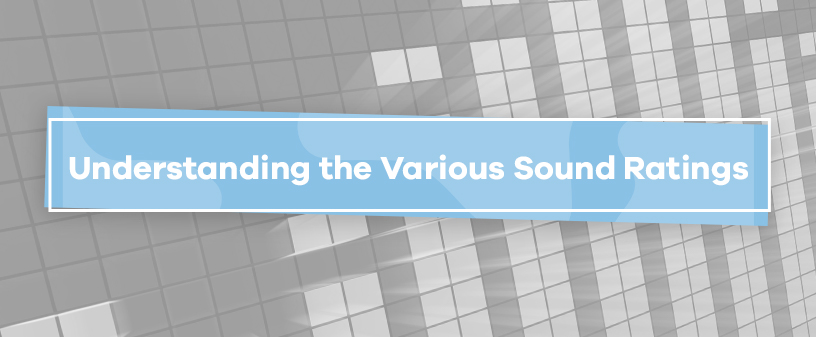
When you begin to look for soundproofing materials, it’s essential to understand what type of product you need. You might know that you want to reduce the level of noise and reverberation produced in your room, office or business, but to what degree does this sound need reduction?
Sound ratings help you better understand the acoustical properties and soundproofing level of your room. No two noises are the same, and neither are the rooms in which you hear them. The sound of rustling leaves outside, for instance, will produce a sound rating strikingly different from thunderous sounds that rattle and shake your walls.
What Does the STC Rating Mean?
The STC rating for walls denotes the sound transmission class of your surroundings. No two walls are quite the same, especially when it comes to their STC rating.
To determine your wall’s STC rating, you must first understand the guidelines for STC determination. The transmission loss values generated by your wall are compared to the curves designated in the general STC guidelines. Whatever curve your wall matches up with determines your STC rating.
A knowledge of this rating grants you a greater understanding of how well your wall reduces airborne noise and sound. As a rule of thumb, larger STC values generally signify better sound control.
What Is the IIC Rating?
Another important detail of soundproofing materials to familiarize yourself with is the IIC. The IIC refers to the impact insulation class of your product. As the name connotes, this form of classification determines to what degree your material withstands impacts without producing higher levels of sound.
Many manufacturers will place soundproofing materials through a lab-performed test that determines what level of impact generates from collisions. A higher IIC rating is commonly used for better noise resistance.
Sound Transmission Loss
When you hear a noise produced from outside your doors, that sound travels into your room to a lesser extent. This is referred to as the transmission loss.
We measure sound in decibels, or the unit of measurement that states how noisy or loud a noise truly is. Let’s say, for instance, that a sound of 50dB occurs outside of your room. Inside of your room, that same sound generates 30dB of sound energy. The sound transmission loss would be 20dB, or the sound energy produced externally minus the level you hear inside.
Sound Transmission Class
The sounds we hear and the materials we use to filter them are categorized based on their STC, sound transmission class. This terminology refers to the class a frequency range falls within for more straightforward classification. A soundproof or noise reduction material with a higher STC rating offers more significant levels of acoustical quality control.
While understanding the specifics behind your soundproofing materials can be complicated, shopping for them doesn’t have to be. At Soundproof Cow, we provide home and business owners with the level of sound and echo control they need. Browse our vast variety of products online and place your order today!
Learn More About Understanding Sound
What is Reverberation of Sound
Impact Noise vs Airborne Noise
How to Determine the STC Rating of a Wall






